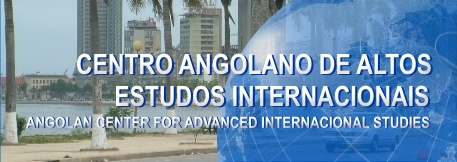![]()
|
|
 |
|
|
|
|
|
|
|
|
|
|
Luanda |
Bengo |
Benguela |
Cabinda |
Kuanza Sul |
Namibe |
Huíla |
Zaire
| Uíge |
Huambo |
Kuanza Norte |
Kuando Kubango |
Bíe |
Lunda Sul |
Lunda
Norte | Malange |
Moxico |
Cunene |
THE PROVINCE
OF HUAMBO Paiva Coteiro was the first specialist to study the region of Huambo and he arrived at the conclusion that it has all the conditions to accommodate urban centres, due to its excellent climate, geographical position favourable for agriculture, a good hydrographic grid, friendly population and network of rivers for fishing and swimming.
Natural
attractions The Kavongue Forest reserve, has an area of 39 km2. It is located at the junction of the meridian lines Kuito-Bié.
Rivers Another important place to visit is the Dam do Ngove, there is a river beach with good conditions for swimming, angling and sailing. There are various gardens spread around the city and also municipal flower beds. The waters at Balombo are rich in minerals and are considered to have medicinal properties.
Main
tourist attractions
Almost the capital of Angola at one point, Huambo is now trying to regenerate its once beautiful cities Know as “The Granary of Angola”, the province of Huambo has long been at the grandiose city of Nova Lisboa or New Lisbon was built during the heyday of Portuguese colonialism in the early 20th century. The intension was to move the capital from Luanda to Huambo because of its pleasant climate and productive maize plantations, but in fact this never happened. Architecturally, Nova Lisboa (now known as Huambo) was a landmark. With its stunning colonial style buildings and wide avenues, it used to be Angola’s most beautiful city. But the city was also key in terms of Angola’s political evolution. The obvious priorities are the regeneration of the city of Huambo itself, as well as the rehabilitation of the province’s maize plantations. The problem is a lack of investment.
But war and mismanagement led to the collapse of coffee production after independence, with exports sinking to about one tenth of their former volume. Dense rainforest covers much of Uige and the forest is already being exploited haphazardly for tropical hardwoods. Investment opportunities in this area are significant, especially as the local government is actively seeking funding, and incentives are being offered as part of the central government’s new code of foreign investment.
During the height of the civil war, many people were driven off the land. But since the Lusaka Peace accord in 1994, the area has become far more stable. Uige is now hoping to achieve self-sufficiency in
food production, and with adequate investment, coffee production could take off once more.
|
One of the governor’s aims is to oversee the planting of one million arabica coffee. Kassoma says:”Arabica is the most popular coffee on the world market. By exporting this product, we would not only generate
revenue for the province but also attract more foreign investment”. With peace and investment, there is a real possibility that Huambo could thrive and prosper, returning to its former glory.
20 km from Huambo, are the Embala Grande (Great Embala) Ruins, with their walls and underground constructions which centuries ago sheltered the "soba" (king) Camdumbo. This breathtaking view, with caves formed by small streams, disappears underground and surfaces again further on. |
|
|